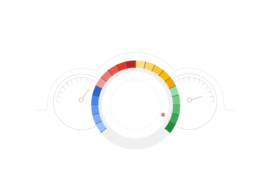Negative SEO: Disavowing Links in the Aftermath of Google Penguin
Among other targets, the Google Penguin update in April 2012 laid new ground rules as to where sites should be getting their links from. This change in approach is the backdrop to most of the discussions about negative SEO. While there are some excellent white hat strategies that can be used for positive results in terms of organic search and ranking potential, at the opposite end of the scale lie techniques that will garner negative results.
A trend toward inbound links that originate from irrelevant and low-quality sites is going to see a site heading down in the serps. Since it is a fairly easy process to add links, particularly to sites of a dubious nature, the idea that someone else could point harmful links to a legitimate site is causing some concern. It’s not just a concept either. There is a web service set up specifically to offer negative SEO services: negativeseo.me claims to destroy the Google rankings of competitors sites. The site is quick to point out that by creating bad links, sites can be banned by Google. They also claim to stay within the framework of US legislation. That may be so for the time being at least, but it could never be described as ethical. It can get even worse than that. There are also reports of black hat SEOs buying links on Fiverr, setting up WordPress spam blogs, reposting original content on thousands of web pages, writing damaging reviews and sending fake link removal requests. Clearly it’s a controversial topic, but on the surface at least there doesn’t seem to be much stopping unscrupulous site owners or spammers from indulging in practices that could potentially do some serious damage to the reputation and search engine ranking of legitimate sites.
Keeping tight control of your own SEO practices is going to help win the war against potential attacks. If you are squeaky clean when it comes to SEO, you are going to have the likes of high quality brand signals, mentions of your brand name in great sites, social votes and offline signals working in your favor. This kind of stuff is going to put you at a lower risk and will make all the difference unless you are the unfortunate target of a particularly vicious attack. If you suspect that evil forces are at work, there are certain things you can look at. You’re going to want to be keeping an eye on your Google Webmaster Tools dashboard for a start. Rand Fiskin, founder and CEO of SEOmoz, recommends sending a preemptive reconsideration request to Google if you start to see dubious signals. Those signals are going to include increasing numbers of links with exact-match anchor text, links from sites that are completely irrelevant to yours or that are of a very low quality. In order to disavow links in a timely manner, you are going to have to keep a fairly close eye on your links. SEO Hacker offers a list of tools that will help you to keep track of inbound links (seo-hacker.com/great-alternatives-yahoo-site-explorer/). Automation is going to save you a heap of time and effort where tracking backlinks is concerned.
Whether or not negative SEO can seriously affect a site’s potential is going to remain up for debate for quite some time to come. Matt Cutts has recently announced the imminent arrival of a link disavowing tool that will allow web masters to report vendettas against them, so it appears they are taking the issue seriously. It seems that sorting through those tool submissions might very well stack up to a fairly hefty workload for Google.
Sources
SEO Hacker: How Google Plans to Control Negative SEO
http://seo-hacker.com/google-plans-control-negative-seo/
Search Engine Watch: Matt Cutts Talks Google Penguin, Negative SEO, Disavowing Links, Bounce Rate & More
http://searchenginewatch.com/article/2182895/Matt-Cutts-Talks-Google-Penguin-Negative-SEO-Disavowing-Links-Bounce-Rate-More
SEOmoz: Negative SEO: Myths, Realities, and Precautions: Whiteboard Friday
http://www.seomoz.org/blog/negative-seo-myths-realities-and-precautions-whiteboard-friday





